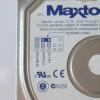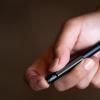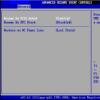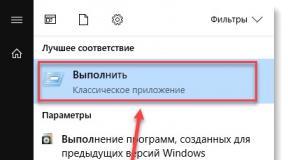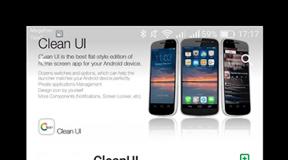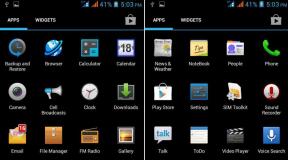What is Gorilla Glass and how do they differ from each other? Protective glass Gorilla Glass Phones with Gorilla Voice 4
Protective element of the screen modern smartphones is glass, which replaced plastic resistive touchscreens. But glass, against the background of transparent polymers, has one significant drawback: It's fragile. One small blow and the screen becomes covered with a web of cracks. In order to prevent such an outcome, tempered glass with increased strength is being actively developed. Their most famous manufacturer is the American company Corning, famous for its Gorilla Glass brand.
Gorilla Glass is a glass with a special composition that has been subjected to chemical and physical processing. Its purpose is to modify the structure of the material to increase resistance to scratches and impacts. Another advantage is that it reduces the risk of injury: shards of tempered glass do not have very sharp edges. When using a smartphone with cracked glass, the risk of cutting your finger is significantly reduced. The same goes for a phone screen accidentally crushed in your pocket.
The idea of using chemical treatment of glass to impart strength was born in the first half of the 20th century. Then soda-lime glass was invented, which has increased reliability. In 1959, Corning began testing various methods chemical processing of glass. Then, using alkaline compounds and aluminosilicate, Chemcor glass was created, which was later used in aviation and motor vehicles. But it was not widely used.
Everything changed in 2006, when Apple began developing the first iPhone. The plastic of resistive touchscreens quickly wore out and scratched, which Jobs did not like. The Apple leader turned to Corning management and proposed reviving the technology. At that time, the company was already independently trying to resume research in this direction. Cooperation with Apple has allowed us to significantly increase investment in development. As a result, the first generation of Gorilla Glass was born.
Gorilla Glass is made using ion exchange hardening technology. Classic silicate glass is immersed in a melt of potassium salts, heated to temperatures of about 400-500 degrees. Under their influence, weak sodium ions in the glass are replaced by stronger potassium ions, which increases the strength of the product. Thanks to the strengthened molecular bonds provided by chemical hardening, Gorilla Glass' hardness on the Moss scale reaches 6 points (out of 10, the hardness of steel is about 5).
The thickness of Gorilla Glass was about 1 mm, while the impact resistance was up to 3 times greater than that of conventional tempered glass. For 2007 (when the thinnest smartphones were thicker than 10 mm) this was normal indicator. But soon the thickness of the device began to decrease, and there was a lot of extra millimeters.
Gorilla Glass 2
In January 2012, the company introduced the second generation of tempered Gorilla Glass. By that time, Corning's development had already been used in more than 200 million smartphones around the world. A new version Gorilla Glass has become 20% thinner, with an increase in strength qualities up to 4 times. Engineers have improved the technique of saturating workpieces with potassium ions, ensuring their deeper penetration. This made it possible to make the layer saturated with them thicker.
Gorilla Glass 3
To make Gorilla Glass 3, released in January 2013, more durable, the developers have improved the technology. According to the manufacturer's statements and tests, it can withstand loads greater than sapphire crystal. Native Damage Resistance technology made it possible, with the same thickness, to increase strength by 3 times (compared to the second generation). Scratch resistance has increased by 40%, and impact resistance has become 50% higher.
Gorilla Glass 4
In the new generation of glass, shown in November 2014, the manufacturer managed to reduce the thickness by 2 times, bringing it to 0.4 mm. Other characteristics (strength, resistance to impacts and scratches), however, remained at the level of its predecessor. The goal of the new glass is to reduce the thickness of mobile devices without compromising their protection. According to the creators, it is 2 times stronger than coatings made using competing technologies.

Alternatives to Gorilla Glass
Competing companies are not standing still and are developing alternative coatings for screens that have increased durability. One of them is sapphire glass, created by the synthesis of this mineral. It is highly resistant to scratches (only diamond and some synthetic substances can leave a mark), but it is more fragile and also expensive.
The Japanese company Asahi, specializing in the development of new brands of glass, has also succeeded in this field. In 2011, it released Dragontrail, a more affordable alternative to Gorilla Glass. It is slightly inferior to its competitor in terms of strength properties, but is 6 times superior to ordinary glass. Due to its low price, Dragontrail is in demand among Chinese manufacturers such as Xiaomi, Lenovo, Meizu. Even Sony equips their Z series flagships with it.
In Germany, Schott is developing a competitor to Gorilla Glass. Their development, Xensation Cover, also claims to be one of the most durable types of glass. Its presentation took place in 2012. As of 2016, the most renowned manufacturer using Xensation Cover is Chinese company Meizu. Glass is used in new budget smartphones M3 series.
Crash test of Gorilla Glass 4 in a smartphone
You will also like:


 Why does a smartphone heat up: 7 popular reasons
Why does a smartphone heat up: 7 popular reasons
Corning then “bathes” the glass sheets in a potassium ion bath that is heated to 400 degrees Celsius. After this procedure, the aluminosilicate becomes compressed by these ions. The pressure creates a protective layer and gives it strength that regular glass does not have.

Scratch resistance does not change year after year, but resistance to shocks and falls increases with each generation of Gorilla Glass. According to Corning, the latest generation of their glass can withstand up to 15 drops from a height of one meter. That's twice as much as Gorilla Glass 5 can withstand. The latter survived a 1.5-meter drop onto an uneven surface 80 percent of the time. - from a height of less than a meter.

Corning glass is already used by more than 40 smartphone manufacturers in more than 4.5 billion devices. Corning partners with manufacturers to provide Gorilla Glass as part of the product's manufacturing process. The average consumer can't go out and buy a sheet of Gorilla Glass to install on an existing device. In this sense, Corning is an original equipment manufacturer (OEM). The finished product will contain Corning sheet, but the final product will have another company's brand on it.

What kind of protective glass will be installed in a particular smartphone directly depends on the price segment of the device. For example, many budget phones do not use Gorilla Glass at all, so their displays quickly get scratched and become unusable with the slightest fall. Gorilla Glass can often be found in mid-price smartphones fourth generation, also very high quality glass. Such devices include, and even tablets - for example, .

Gorilla Glass 5 can already be found in smartphones costing 20,000 rubles and above, including the latest flagships. One of the most inexpensive gadgets with such glass is, as well, but the same technology is used in the new one.

The first smartphone with Gorilla Glass 6 was introduced this year - the OPPO R17. In the next few months, other vendors will join the Chinese manufacturer.
Not only Gorilla
Many manufacturers prefer not to disclose what kind of protective glass they use in their smartphones. Huawei, for example, has not hidden that it prefers Gorilla Glass 5, but what kind of glass is installed remains a mystery. However, many agree that this smartphone is also protected by the fifth generation of Gorilla Glass.

Today, more and more more smartphones get Gorilla Glass, and the scope of this glass is far from limited to smartphones.
Corning produces reliable protective glass for smartphones, Gorilla Glass, which in some cases saves the display not only from scratches, but also from cracks. A phone with protection from Corning has a better chance of surviving a fall or impact on the screen, and it is guaranteed to protect the display from scratches. Below is a list of all modern smartphones with Gorilla Glass, and right after it are the five best models.
List
- S3, S4, S5, S6, S6 Edge, S7, S Edge, S8, S8 Plus, S9, S9 Plus
- Note 3, Note 4, Note 5, Note8, Note9
- A3, A5, A6, A6 Plus, A7, A8, A8 Plus
- J5 Prime
- Redmi S2, 5, 5 Plus, Note 5, Note 5 Pro, 6, 6 Pro
- Mi Max, Max 2, Max 3, Mi Note, Mi A2, Mi 6x, Mi 8, Mi8 SE, Mi Mix 2s
- P8, P9, P10, P10 Lite, P10 Plus, P20, P20 Pro
- Honor 10, 7X
- Mate 8, 10, 10 Pro
- Pro 5, Pro 6, Pro 7, Pro 7 plus
- M15, M15 Lite, M10 Plus, M16
- MX5, MX6
- 3, 3T
- 5.5T
- 5 Dual Sim, 5.1, 5.1 Plus
- 6, 6.1, 6.1 Plus
- 8 Dual Sim, 8 Sirocco
- One M9, One A9, M8
- U11, U11 Eyes, U11 Plus, U12, U12+, U Ultra, U Play,
- Desire 12
- Desire 10 Pro
- G4, G6, G6 Plus, G7
- Nexus 5
- X Venture
- XA1, XA2, XA2 Ultra
- XZ, XZ Premium, XZs
- XZ2, XZ2 Compact
- Pixel, XL
- Pixel 2, 2 XL
- Pixel 3, 3 XL
Rest:
- ZTE: Nubia Z17 mini, Axon 7, Z11 Max
- Asus Zenfone 3, 4, 4 Max, 5, 5 Lite, Go, Max M1, Max Plus M1
- Motorola Moto G5S, G6, Noto Z, Moto X Play
- Oppo F7, R11s Plus
- K10000 Pro
- Vivo Y81
Best models
It is obvious that not only flagships, but also cheap phones receive protective glass from Corning. However, expensive models use high-quality and durable Gorilla Glass 5, while budget phones can have Glass 2 or 3. Below are the best devices that have received protection from Corning.
1st place – HTC U12 Plus
The best flagship in subjective opinion at the end of 2018 is the U12 Plus from the famous HTC brand. It runs on Android 8.0 out of the box, but will definitely receive an update to Android 9.0 and most likely 10.0, although there is no word on when that will be.
The device with a Super LCD screen received high quality pictures, its diagonal is 6 inches with a resolution of 2K, which gives a pixel density of 537 per inch. Naturally, it is covered with protective glass, however, this is not new protection, but just Corning Gorilla Glass 3. This is strange, since the company's previous flagship - U11 - uses Corning Gorilla Glass 5. But oh well, even with such protection the phone does not It gets scratched if it's in your pocket with your keys.
At the back there are 2 rear cameras with resolutions of 12 and 16 megapixels, optical stabilization and f/1.75 aperture. Video shooting is available in 3840x2160 format and even shooting at 60 FPS, although there is nothing new here.
The processor is Snapdragon 845 with Adreno 630 video core, that is, the device’s performance is excellent. Also, the HTC U12+ has 6 GB of RAM, 128 GB of memory and a 3500 mAh battery. The manufacturer claims that it lasts for 23.8 hours of talk time, which is a good result. The highlight of the phone is the side touch panels Edge that respond to compression. We squeezed the smartphone and a side column with a menu appeared. They can also be programmed for other actions.
An excellent and reliable device with protection from Corning. Recommended for purchase.
2nd place – OnePlus 6
The flagship is good because it is devoid of unnecessary flagship “arsenal”: there is no water protection, a 3D face scanner, touch-sensitive side panels and other bells and whistles. But there is the most powerful hardware, an excellent shell, and most importantly, optimization of performance and energy consumption.

It’s not for nothing that OnePlus 6 became the first smartphone in terms of performance, equipped with a Snapdragon 845 processor. Speed, absence of friezes and brakes, power reserve for the next 3-4 years, stable software updates and support, build quality - all these are the advantages of the device.
The screen is with a 6.28-inch diagonal Amoled matrix and 2K resolution. Unlike the HTC U12+, this device received a protective glass, scratch-resistant Gorilla Glass 5, which is sure to withstand a drop or a slight blow, not to mention scratches. Many buyers use the device without additional protective films and glass – there is enough “native” protection.
3-4 places – Samsung Galaxy S9 and S8
It is appropriate to place 2 phones at once in this position - S9 and S8. Both have reliable Corning Gorilla Glass 5 protection on both sides, so the phones are not afraid of drops and scratches. Naturally, within reasonable limits.

Effective protection against water - the devices work even under water, - build quality, the best Amoled screens (recognized by the Display Mate studio) with automatic color correction for the user, proprietary Exynos processors and TOP technologies, including face recognition and iris scanning for unlocking. It’s not for nothing that these flagships have a high price.
Many users don't like it new Galaxy S9 is not an acquired taste, so we give phones 3-4 places. If they were cheaper, it would be appropriate to put these phones in 1-2 positions in the rating.
5th place – Xiaomi Mi 8
New TOP phone Chinese brand Xiaomi made with Gorilla Glass on the front and back. The phone received an Amoled matrix with a diagonal of 6.21 inches and a resolution of 2K. There is a “unibrow” at the top, and the display itself occupies 88.5% of the entire area.

SoC – Snapdragon 845, 6 GB RAM. Of course, the speed of the device is high. Plus, it uses cool rear cameras. You will find their review with photo examples.
The device operates under Android control 8.0, will receive an update to 9 in the future. Build quality, speed, optimization - all this is at a high level, as befits a flagship. It is recommended for purchase, although it is difficult to find the phone in stores - it was sold out within hours of the official start of sales.
Please rate the article:
The modern smartphone has long become something more than a means of communication and communication.
For business people it is a sign of status, for young people it is a multimedia entertainment center. Many users want a device that can perform any task, and some people care about appearance. As they say: “You meet people by their clothes...”.
We have selected best smartphones who received unique design thanks to the glass coating.
Attention! The selection includes devices released before April 2016. Prices are also April.
Samsung Galaxy S7
The flagship not only in design, but also technical features. First of all, it is worth noting the glass coating on the front and back panels. The manufacturer itself calls it 3D, since a similar rounding of Gorilla Glass 4 has not yet been used.
The flagship is certified to the IP68 standard, so it is not afraid of dust, dirt, rain or submersion, although the latter is in doubt.

The performance indicators of the flagship are very high and can compete with any representatives of the premium class. Smartphones with Snapdragon 820 and Exynos 8890 processors have been released for different markets, the RAM capacity is 4 GB, and the internal memory is available in several versions: 32, 64 and 128 GB.
Price: from 50,000 rubles.
Samsung Galaxy S6 Edge
At the time of presentation, the smartphone was recognized as the best design solution. This effect was provided by glass panels that had a rounded shape. There were also unique colors on display that looked absolutely gorgeous under glass.

The manufacturer did not stop at the ideal design and equipped the device with top-end equipment. The device received an 8-core Exynos 7420 processor and 3 GB of RAM. The amount of internal memory is available in three versions: 32, 64 and 128 GB. The 16 megapixel main camera is equipped with an optical stabilizer, and the battery capacity is 2600 mAh.
Cost: about 45,000 rubles.
Despite some complaints regarding the design, it turned out to be very attractive. All this is the result good combination body materials - metal and glass. The latest smartphone covered on both the front and back sides. At the same time, the screen received smooth tempered glass, and back panel covered with curved glass with a 2.5D effect.

The 2016 flagship is the . This reputation was achieved Snapdragon processor 820 and 3 GB LPDDR4. Together with the Adreno 530 graphics adapter, the smartphone turns into a coherent system, ready to perform any task. The amount of ROM can be 32 or 64 GB. The 3000 mAh battery supports Quick Charge 3 technology.
Price: about 30,000 rubles.
The gadget is covered with Gorilla Glass 3 on both sides, and there are metal frames on the sides to ensure its safety in case of falls. Appearance ordinary and does not stand out in any way: the presence of a glossy glass surface does not add much charm, and the device is available only in white and black colors.

As for performance, everything is quite simple here too. A small amount of RAM (1 GB) and an 8-core MediaTek MT6592 processor provide stable work and execution standard features. The device has an 8 megapixel main camera and a 2050 mAh battery.
Price: about 13,000 rubles.
A striking representative of the budget class of devices, the distinctive feature of which is its appearance. The back panel is made entirely of tempered glass and has some special features: it contains the company logo, which is illuminated during charging or unlocking.

The phone is powered by a quad-core processor, 1GB of RAM and 16GB of internal storage. This is quite enough to perform standard daily functions.
Another smartphone from Lenovo, but of a higher class. Essentially, it is a camera phone, the design of which is similar to digital cameras, for example, the Sony T100. The body is covered with Corning Gorilla Glass 3 on the front and back sides, the remaining parts are framed with chrome-plated metal.

In terms of performance, the gadget does not lag behind its competitors: the 8-core Snapdragon 615 processor and 3 GB of RAM provide ample opportunities for use in any direction. The built-in memory is available in a volume of 32 GB, the main camera is 16 MP and has a 6-element sensor. The battery is non-removable, 2900 mAh.
He could have remained in oblivion if not for the design features. Firstly, the back panel is completely covered with Corning Gorilla Glass 2. Combined with the color, it looks like there is a deep blue sea under the glass. Secondly, the gadget is recognized as the thinnest device of 2015 - the body thickness is only 4.7 mm.

However specifications The device belongs to the budget class. The device received 1 GB of RAM and a 4-core processor. The small dimensions are reflected in the battery, whose capacity is 1800 mAh.
Cost: about 12,000 rubles.
The device body consists of two glass sandwich panels. However, the glossy finish is not the only advantage. The device case is made according to the IP68 standard and allows it to be immersed to a depth of up to two meters for 30 minutes. Side faces are made of aluminum, and all connectors are securely closed with plugs.

System and user tasks are performed by a 4-core Snapdragon 601 processor and 3 GB of RAM. The internal storage has a capacity of 16 GB. A non-removable 3100 mAh battery provides autonomous operation during the day with active use. The resolution of the main camera is 21 megapixels.
Price: about 40,000 rubles.
Many argue that the device is practically no different from its predecessor P6 in terms of design. It's hard to argue, but sometimes it's for the better. Ascend P7 has a very attractive appearance thanks to Gorilla Glass 3 coating on both sides of the body. There is a dot pattern on the back panel which is made using 7-layer glass overlay.

The mid-range smartphone is equipped with a 4-core Kirin 910T processor, which works in tandem with 2 GB of RAM. There is support microSD cards, with which you can expand the standard 16 GB of memory. The battery capacity is 2500 mAh, the main camera sensor has a resolution of 13 megapixels and backlight technology.
Cost: about 20,000 rubles.
OPPO R1
Another masterpiece of glass-coated design art back cover. However, it is not just tempered glass that is used, but sapphire glass. In addition, it has a pattern in the shape of the facets of a precious stone and an incredibly beautiful violet-blue color. Appearance is the main advantage of a smartphone.
Apparently, this time Corning decided not to wait for the start of the annual CES exhibition to introduce the fourth generation of high-strength Gorilla Glass.
Gorilla Glass has gained widespread popularity with the advent of the mobile era due to its increased resistance to scratches and impacts. Last year, with the release of Gorilla Glass 3, manufactured using Native Damage Resistance (NDR) technology, the company provided mobile devices, or rather their screens, the ability to withstand a variety of daily threats, including encountering a bunch of keys in one tight pocket. However, as many smartphone owners have learned from their bitter experience, displays protected by Gorilla Glass 3 still have the unpleasant tendency to break. When developing Gorilla Glass 4, Corning tried to focus on the biggest threat: falling.
Corning says its engineers examined hundreds of broken devices and broken displays during the development of Gorilla Glass 4 in order to determine the latter's Achilles heel. What Corning specialists were able to discover as a result is not a big surprise for ordinary consumers: most often, contact with a rough hard surface like asphalt or concrete ends very badly for smartphones.

Corning researchers had to review their internal strength tests and make changes accordingly. Specifically, they came up with another new strength test using 180-grit sandpaper to simulate a rough surface. During the crash test, devices with protective glass Gorilla Glass 4 and competing solutions were dropped from a height of one meter. Gorilla Glass 4 managed to perform twice as well as Gorilla Glass 3 and other tempered aluminosilicate glasses. Test results showed that Gorilla Glass 4 came out unscathed in 80% of cases, while soda-lime glass broke in almost 100% of cases. Of course, 80% is far from the best result, but it’s worth remembering that we’re talking about glass.
Currently, trial samples of Gorilla Glass 4 are already being shipped to customers. The first consumer devices with displays protected by Gorilla Glass 4 should appear by the end of this year. Corning recognizes that the sky is the limit. There are many other areas in which significant improvements are planned for the near future: the development of anti-reflective coating and.
Read also...
- Creating a custom archives page in WordPress How to integrate this template into any theme
- Remotely turn on your computer for free, without SMS and without clouds, using Mikrotik
- Professions: social group administrator
- How to remove a program from Android, including the standard desktop application of various fruits android how to remove



